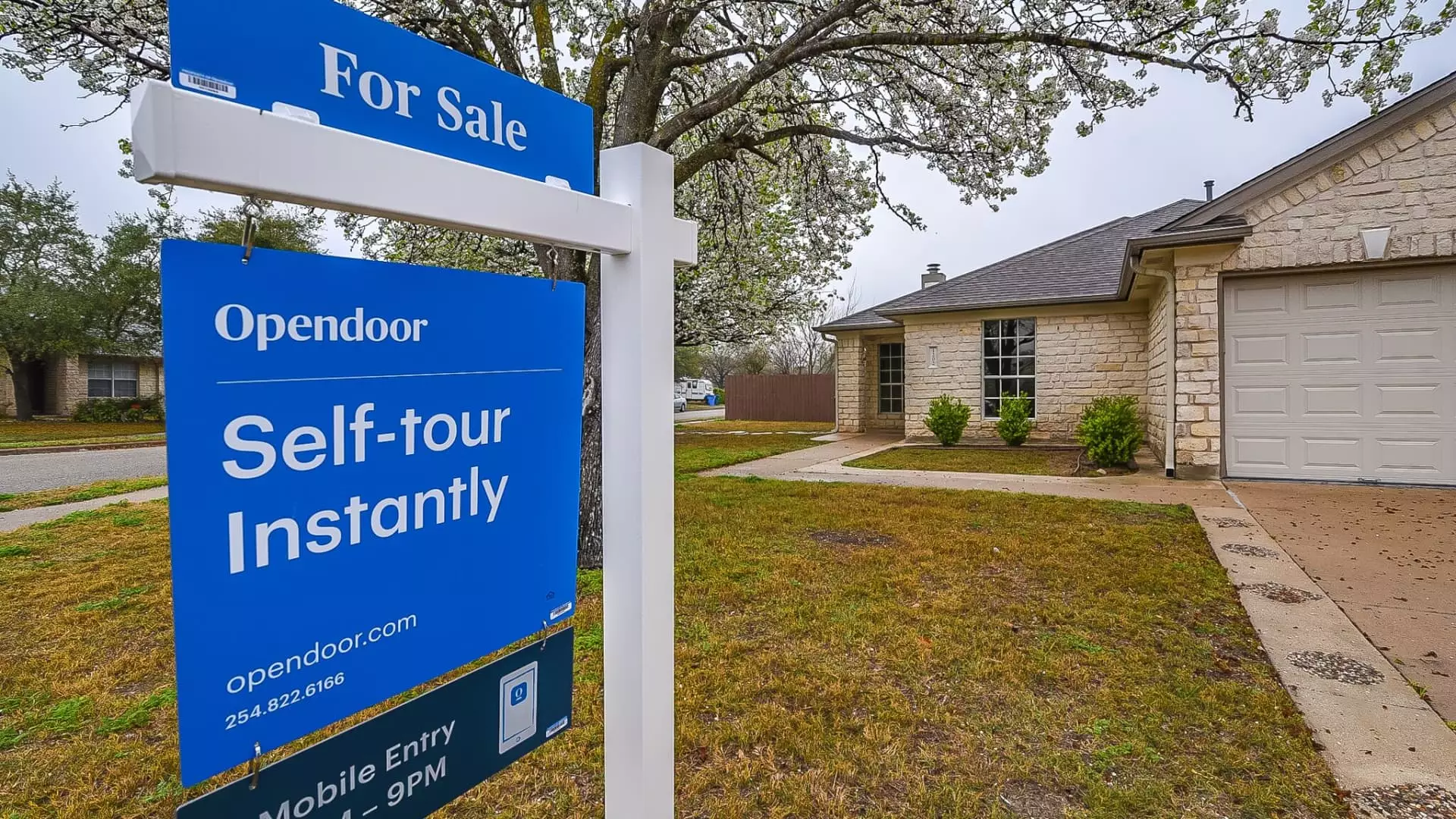Once buried under the weight of its own miscalculations and a collapsing housing market, Opendoor seems to be pivoting towards a more promising future. The company’s recent surge in stock price—an almost fivefold increase since July—reflects a rare spark of investor optimism in a sector notorious for its volatility. However, beneath this fleeting enthusiasm lies a complex reality that demands a critical eye. While the rebound might look promising on the surface, question marks swirl about the sustainability of Opendoor’s newfound momentum and its strategic direction.
At the core of this story is a company that was built on the disruptive promise of utilizing technology to revolutionize home buying and selling. Launched in 2014, Opendoor initially caught the market’s imagination with its iBuying model—a fast, automated process that promised to streamline real estate transactions. But the cyclical nature of the housing market, coupled with rising interest rates and declining demand, led to a catastrophic revenue plunge from over $15 billion in 2022 to just over $5 billion last year. The company’s desperate financial struggles culminated in a near-death experience, with its stock hitting rock-bottom, forcing considerations of drastic measures like reverse stock splits just for survival.
Yet, in an unexpected twist, Opendoor managed to regain compliance with Nasdaq standards and canceled the reverse split, signaling a tentative step toward stabilization. The question here is whether this bounce back is driven by genuine business improvements or mere speculative fervor. The recent rally, partially driven by high-profile hedge fund manager Eric Jackson, has propelled the stock from a mere penny stock to a more recognizable—although still undervalued—$2.52 per share, showing signs of life.
Strategic Shifts: Beyond the Fluctuating Housing Market
Wheeler’s leadership highlights an ambitious transition from the traditional iBuying model towards a less capital-intensive, referral-based model—a strategic pivot that could redefine Opendoor’s trajectory. This shift is crucial because it addresses one of the fundamental weaknesses of the original approach: the high capital requirements and exposure to market downturns. By focusing on referrals and third-party transactions, Opendoor aims to generate revenue with less physical inventory and capital at risk, aligning itself more closely with recurring revenue streams and less cyclical income.
However, whether this transition will be enough to restore investor confidence remains open. The company reports a modest rise in revenue for the latest quarter—around 4%—but continues to face significant headwinds. A projected revenue decline of at least 36% for the upcoming quarter indicates that demand for home purchases through Opendoor’s platform remains weak, exacerbated by persistent high mortgage rates and declining buyer activity.
The reduction in home acquisitions—from 3,504 in the third quarter of 2024 to just 1,200 planned for the current quarter—reflects a cautious approach amid discouraging market signals. Further, tightening marketing spending suggests a realignment of priorities—either to conserve cash or to prepare for a longer, more gradual recovery.
The Myth of a Rapid Turnaround and the Reality Check
Despite the optimistic rhetoric, the evidence for a significant turnaround remains elusive. Narrowed losses and slight revenue upticks are noteworthy but hardly indicative of a strong comeback. The market’s initial enthusiasm, fueled by speculative bets and high hopes, might be misreading the depth of the problems facing Opendoor.
Jackson’s optimistic outlook—predicting a stock price potentially rising to $82—relies heavily on the company returning to revenue growth and gaining market share again. Yet, this is a gamble that underestimates the systemic issues at play: an industry suffering from structural headwinds, relentless macroeconomic pressure, and the inherent risks of trying to reinvent a core business model in a declining market.
Furthermore, Wheeler’s focus on transparency and strategic communication is a positive sign; it signifies a recognition that rebuilding trust is essential. But in the eyes of many investors, it also underscores how far Opendoor still needs to go. The market is notoriously skeptical of companies that have cratered before, and until operating metrics improve substantially, the stock will likely remain a volatile and speculative play.
In essence, Opendoor’s recent rally is more a testament to investor hope than to concrete business improvement. The path ahead involves navigating a tough macroeconomic landscape, repositioning strategically, and convincing skeptical stakeholders that its new model can withstand the inevitable storms of the housing cycle. Whether the resilience shown now is merely a mirage or the beginning of a genuine recovery will only be revealed with time—and, crucially, consistent execution.

